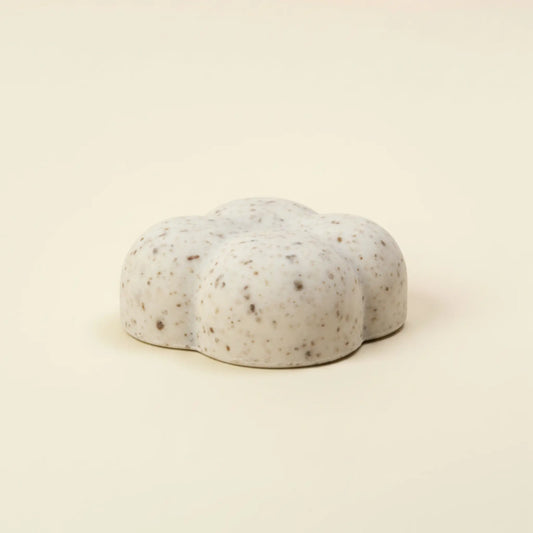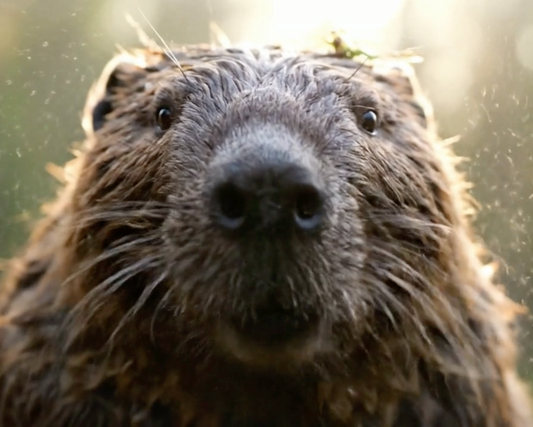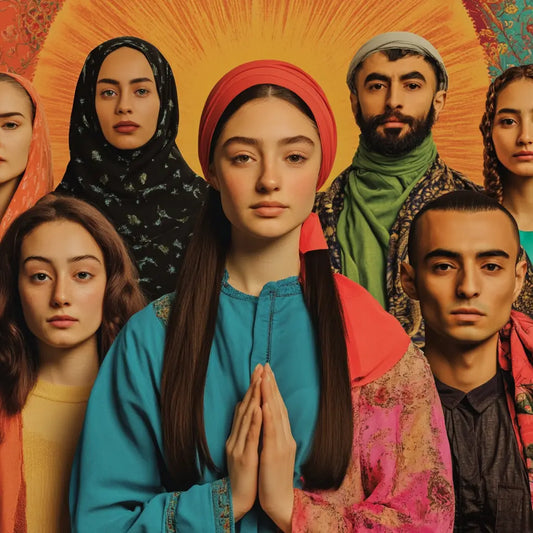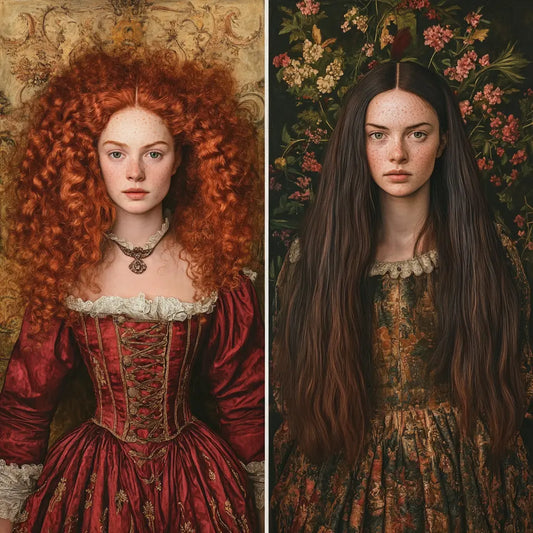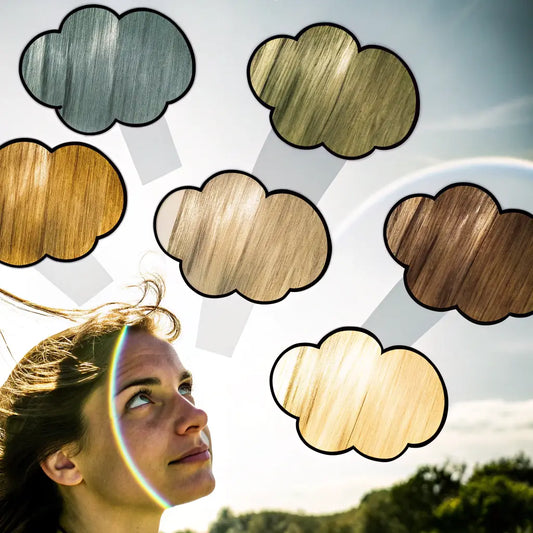Hair color is the result of genetic factors and the production of melanin. Melanin is the pigment responsible for the color of your hair, skin, and eyes. In this article, we'll take a closer look at the four most common natural hair colors: black, brown, blonde, and red. We'll explore how melanin—specifically eumelanin and pheomelanin—determines each hair color, and how factors like ethnicity, geography, and genetics shape the shades you see. Whether your hair is black, red, or blonde, you'll learn some interesting facts about the science behind your unique hair color.
Natural hair colors: a brief overview
The most common natural hair colors are black, brown, blonde, and red. These colors are determined by the balance of two types of melanin – eumelanin and pheomelanin . The combination of these pigments, along with your genetics, determines your hair shade.

- Eumelanin : This melanin is responsible for darker shades such as black and brown. High concentrations of eumelanin give dark hair, while lower concentrations create lighter shades of brown.
- Pheomelanin : This pigment is responsible for red and yellow tones. Higher concentrations of pheomelanin create red hair, while combined with low levels of eumelanin can produce blonde hair shades.

Genes determine how much and what type of melanin your body produces. The result is a wide range of natural hair colors, with black being the most common color in the world, followed by brown, blonde, and red, the rarest of the common colors.
- Unexpected fact : Only about 2% of the world's population has natural red hair, making it the rarest hair color. This is largely due to a specific genetic mutation.
Black hair: the most common color in the world
Why is black hair so common?
Black hair is the most common natural hair color in the world, especially among African, Asian, and indigenous populations. High concentrations of eumelanin in the hair shaft create deep, dark black colors. Black hair evolved in regions with high exposure to sunlight, so eumelanin naturally protects against UV rays.

- Genetic insight : The MC1R gene is a master regulator of eumelanin production. In regions near the equator, where solar radiation is stronger, dominance of this gene helps protect the hair and scalp from UV rays, making black hair a genetic advantage in sunny climates.
Why is black hair the most common?
Approximately 75-80% of the world's population has naturally black hair, making it the most dominant color. This is an evolutionary advantage in sunny regions, where eumelanin not only determines hair color, but also acts as a natural sunscreen for the hair and scalp.

- Cultural fact : In many cultures, black hair is closely associated with identity and heritage. For example, in Japan, shiny, black hair is considered a symbol of elegance and is often celebrated in fashion and beauty standards.
- Fun fact: Black hair is most often straight or wavy, depending on ethnicity, although African populations often have tightly curly hair.
- Interesting fact: People with black hair have thicker hair strands compared to blondes. For example, the average diameter of black hair is 0.08 mm , compared to 0.06 mm for blonde hair.
Brown hair: the global "golden mean"
Brown hair shades
Brown hair, which ranges from light to dark shades, is caused by varying amounts of eumelanin. Light brown hair has less eumelanin, while dark brown hair has more, but not as much as black. Brown hair is incredibly diverse and is most commonly found in Europe and America.

- Interesting fact : About 11% of the world's population has brown hair, making it the second most common hair color in the world. In Europe, brown hair is so common that blonde or red hair stands out more.
Genetic diversity of brown hair
Brown hair is most commonly found among Europeans, especially in the Mediterranean region, Western Europe, and the Americas. The variety of shades of brown hair—from chestnut to chocolate—reflects the genetic diversity within these populations.

- Genetic fact : Brown hair is determined by multiple genes, including TYRP1 and OCA2 , which regulate melanin production. Variations in these genes explain why brown hair is so common and comes in a variety of shades.
- Cultural fact: In Italy, brown hair is sometimes associated with wisdom and modesty, as opposed to the temperament often attributed to redheads, or the beauty associated with blondes.
Blonde hair: low melanin content and unique genetics
How is blonde hair formed?
Blonde hair is caused by low levels of eumelanin . When there is very little eumelanin in the hair follicles, the result is light hair shades ranging from light platinum to dark gold. Blonde hair is more common in Northern Europe, where solar radiation is weaker, and therefore less eumelanin is needed for sun protection.

- Interesting fact : About 2-3% of the world's population has naturally blonde hair. The largest number of natural blondes live in countries such as Sweden, Norway, and Finland.
The rarity of blondes
Blonde hair is rare in many parts of the world and is most common in Northern European populations. In other regions, blonde hair is rarer due to geographic adaptations - darker hair provides better protection from the sun's rays.
- Genetic fact : Blonde hair is caused by a recessive gene, meaning both parents must carry the gene for their child to have blonde hair. The KITLG gene plays an important role in regulating melanin production in the follicles.

Blondes in popular culture
- In ancient Rome, blond hair was considered a rarity and was often associated with beauty and luxury. Roman women dyed their hair with saffron or wore wigs made from the blond hair of northern European slaves.
- Nowadays, blonde hair is romanticized in Hollywood and Western beauty standards. Icons like Marilyn Monroe established blonde hair as a symbol of glamour and attractiveness.
Red hair: the rarest of the common colors
Pheomelanin and red hair
Red hair is caused by high levels of pheomelanin and low levels of eumelanin. Pheomelanin gives redheads their characteristic yellow-orange hue. Red hair is the rarest natural hair color, occurring in less than 2% of the world's population, most often in people of Celtic ancestry.

- Genetic mutation : Red hair is caused by a mutation in the MC1R gene . This recessive gene means that both parents must have the mutation for their child to have red hair. This mutation is most common among people in Ireland, Scotland, and Wales.
The rarity of redheads
Red hair is so rare that it is often considered a genetic anomaly. In some cultures, redheads were considered to have supernatural powers. For example, the ancient Greeks believed that redheads turned into vampires after death, and in the Middle Ages, red hair was associated with witchcraft.

- Fun fact : Scotland has the highest percentage of redheads – around 13% of the country's population has naturally red hair, while Ireland comes in second with 10% of redheads.
Historical myths about red hair
- In ancient Egypt, red hair was associated with Set, the god of chaos and violence. Some red-haired Egyptians were buried alive as offerings to Set.
- During the Middle Ages, red hair was often associated with witchcraft and supernatural powers. Red-haired women were sometimes accused of having magical powers or being witches.


Interesting facts and myth busting about natural hair colors
Let's dispel some myths and share some interesting facts about natural hair colors:
- Myth 1 : Redheads will disappear.
- Truth : Redheads will not go away. Even though the MC1R gene is recessive, as long as people continue to carry the gene, redheads will still be born.
- Fun fact : While only about 2% of the world's population has red hair, up to 40% carry the recessive gene, meaning they can pass it on to their children, maintaining the potential for redheads.
- Myth 2 : Blonde hair is always natural.
- Truth : Blonde hair can darken with age due to increased melanin production. Many children who are born blonde will darken their hair as they age.
- Interesting fact : Studies have shown that people with blonde hair have about 140,000 hair follicles , while redheads have about 90,000 , so blondes have denser hair, while redheads tend to have thicker strands.
- Myth 3 : Gray hair only appears with age.
- Truth : Some people may start to have gray hair early due to genetics. Premature graying can start as early as your teens or twenties.

Practical tips for understanding and accepting your hair color
Whatever your hair color, here are some tips for caring for and embracing your natural hair color:
- Protect your hair from the sun : UV rays can lighten or fade your hair color. If you spend a lot of time outdoors, wear a hat or use hair sprays with UV protection to help maintain your color.
- Enhance your natural color : Use shampoos and conditioners that are tailored to your hair color. For example, purple shampoos can help reduce yellowness in blonde hair, while products designed for red or brown hair can bring out its vibrancy.
- Eat nutritious foods : Vitamins like B12 , biotin , and omega-3 fatty acids can support healthy hair growth and maintain your hair's natural shine. Eggs, fish, nuts, and leafy greens are great sources.
- Embrace the changes : Hair color often changes with age. Instead of hiding these changes, consider embracing them as a unique reflection of your personality.

FAQ about natural hair colors
Q: Why do some people's hair turn gray early?
- A: Premature graying of hair is largely determined by genetics, but it can be accelerated by factors like stress, smoking, or certain medical conditions. It occurs when melanin production in the hair slows down or stops.
Q: Can hair color naturally change with age?
- A: Yes, many children born with blonde or light brown hair can darken the color as they grow. Environmental factors, such as sunlight, can also lighten or darken hair over time.
Q: Is red hair more sensitive to the sun?
- A: Yes, redheads have less eumelanin, so their natural sun protection is weaker. This makes them more susceptible to sunburn and requires additional protection from UV rays.
Q: Can two brown-eyed parents have a blonde child?
- A: Yes, if both parents have the recessive blond gene, they can pass it on to their child, even if they have brown hair themselves.
Q: Can stress really cause hair to turn gray?
- A: While stress does not directly cause hair to turn gray, it can speed up the process if you are genetically predisposed to graying.

Conclusion:
Hair color is an amazing combination of genetics, melanin production, and environmental factors. Whether your hair is black, brown, blonde, or red, your natural hair color reflects your unique genetic makeup. By understanding the science behind hair pigmentation and how different levels of eumelanin and pheomelanin create such a diverse palette of shades, you can better appreciate the beauty and diversity of hair colors around the world.





